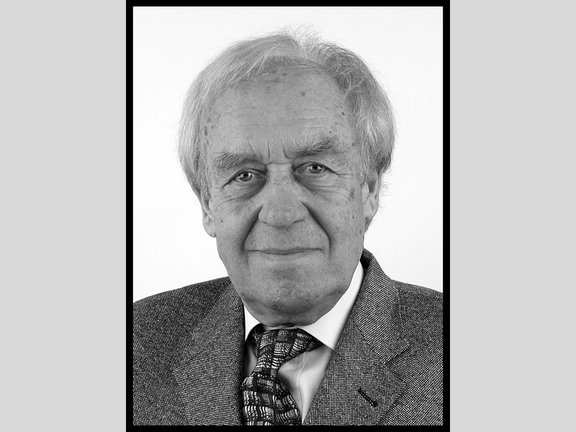Bogdan Povh was born in Belgrade in 1932. A few years later, the family moved to Ljubljana (Slovenia) where he spent his school years and began studying physics at university in 1950, graduating in 1955. This was followed by a year of military service in the Yugoslavian army before he accepted a position as assistant to Črtomir Zupančič at the Jožef Stefan Institute in autumn 1956. Zupančič (later professor at the Ludwig Maximilian University in Munich), who had met Charles Lauritzen and his son Thomas, both pioneers of experimental nuclear physics and at Caltech in Pasadena, at a conference in Copenhagen, organised a research stay there for his doctoral student. And so it came about that Bogdan Povh joined the group of the later Nobel Prize winner William Fowler at Caltech for a two-year "post-doc" from 1957 to 1959 before(!) completing his doctorate in 1960. His time in Pasadena, and in particular the friendships he made there with other postdocs, were to decisively shape the course of his life. Back at the Jožef Stefan Institute in Ljubljana, he completed his doctorate with a thesis on excited states of the oxygen-15 nucleus.
The difficult conditions in his Slovenian homeland forced Bogdan Povh to leave Yugoslavia in summer 1962 and so - thanks to his connections from his time at Caltech - he moved to Freiburg i. Br. to work as an assistant to Theodor Schmidt. Only two years later, in 1964, he habilitated there with a thesis on low-lying excited nuclear states in neon-22. In the following year, 1965, Povh was appointed to the University of Heidelberg. A few years earlier, in 1958, Wolfgang Gentner (also from Freiburg) came to Heidelberg as the founder of the Max Planck Institute for Nuclear Physics. He campaigned for Bogdan Povh to become an External Scientific Member in 1972 and to accept the appointment as a Scientific Member of the Institute in 1975. Povh remained there until his retirement in 2000.
Bogdan Povh was an inventive and inspiring physicist who gave his many students an intuitive and profound approach to physics and succeeded in combining different scientific fields. He left his mark in many fields. Perhaps most outstanding were his ingenious experiments on nuclei in the 1970s, in which a neutron was replaced by a hyperon: "hyper-nuclei". He thus bridged the gap between traditional nuclear physics and particle physics. He was one of the pioneers of hadron physics, which occupied him throughout his life. He carried out experiments at CERN, DESY and the American research laboratory FNAL. He was able to pursue his many original approaches very effectively through the skilful use of existing experimental facilities. However, his legacy goes beyond his scientific contributions. He founded a school of physics, many of whose students have successfully led institutes and chairs at many German universities. For these outstanding achievements, he was honoured with the Stern-Gerlach Medal of the German Physical Society, among other awards.
Bogdan Povh was Managing Director of the MPI for Nuclear Physics from 1985 to 1987. During this time, he was actively involved in setting the course for the future development of the institute. For example, a completely new type of storage ring for heavy ions was built, which not only served as a prototype for a similar facility at GSI in Darmstadt. In fact, in Dirk Schwalm's later department, a separate and very successful field of research developed here in the areas of atomic, molecular and laboratory astrophysics, which today holds a pioneering position in Klaus Blaum's department with the worldwide unique cryogenic storage ring CSR.
Bogdan Povh's publishing activities were also extensive: he was editor-in-chief of the Zeitschrift für Physik A for many years and author of several physics textbooks. His understanding of nuclear and particle physics is reflected in his textbook "Particles and Nuclei", which was first published in 1993 and has since become a standard work that has influenced (and will continue to influence) generations of students. Most recently, the popular science book "Von den Tiefen des Alls in den Mikrokosmos" was published in 2016 as an entertaining journey through modern physics.
The Max Planck Institute for Nuclear Physics bids a grateful farewell to Bogdan Povh and will honour his memory.
(Elisabeth Soergel / MPI for Nuclear Physics)
